| Posted on | entertainment
Traditional Christmas Dishes from Around the World: A Delicious Journey
| Posted on
Traditional Christmas Desserts from Around the World: A Sweet Journey
Christmas is a time to indulge in traditions, family, and food, with sweet treats taking center stage in festive celebrations worldwide. Each dessert carries the essence of its culture, offering a unique blend of flavors and stories. Let’s take a delicious trip around the globe and discover five traditional Christmas desserts that warm hearts and bring holiday cheer.
1. Italy: Panforte
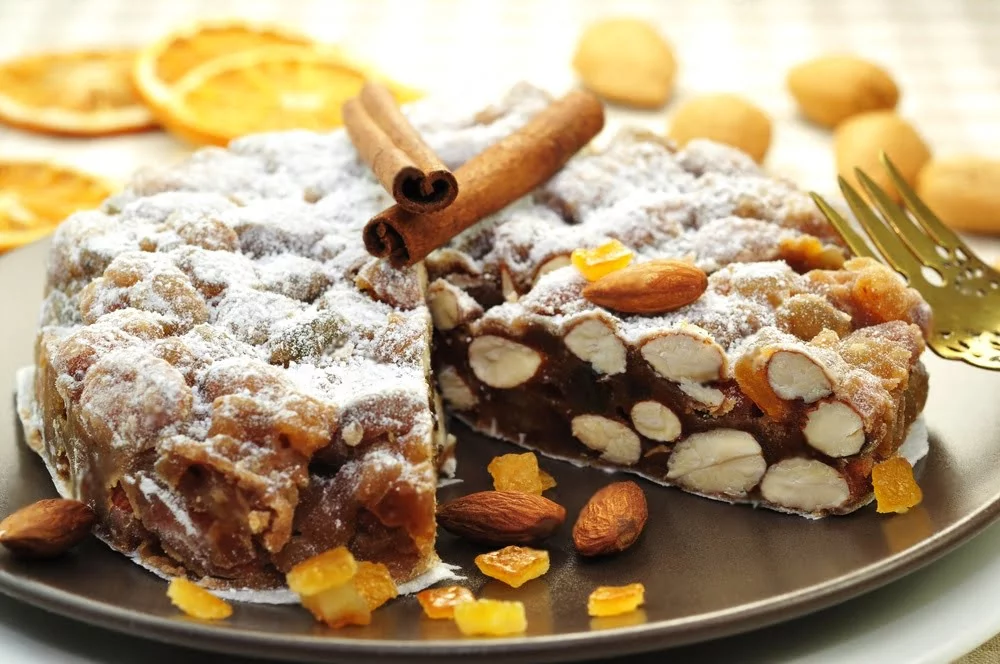
Panforte is a dense, chewy Italian dessert originating from Siena, traditionally enjoyed during the Christmas season. This spiced fruitcake is packed with nuts, dried fruits, honey, and a mix of aromatic spices like cinnamon and nutmeg. It’s often dusted with powdered sugar, giving it a snowy appearance that adds to the festive vibe. Panforte pairs beautifully with a glass of dessert wine, making it a staple on Italian Christmas tables.
2. Sweden: Lussekatter (Saffron Buns)
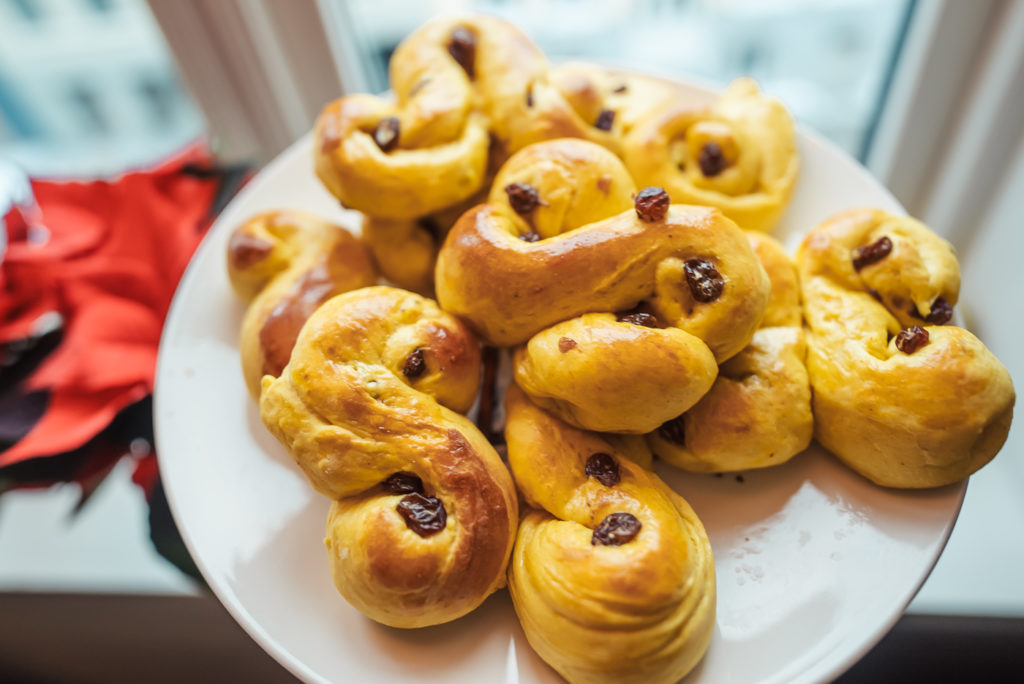
Lussekatter, or St. Lucia buns, are golden-yellow, saffron-infused sweet buns shaped into intricate swirls and adorned with raisins. These buns are traditionally baked for St. Lucia Day on December 13th but are enjoyed throughout the Christmas season. The rich aroma of saffron and the warm, fluffy texture of the buns make them a comforting treat during Sweden’s dark winters.
3. Mexico: Buñuelos
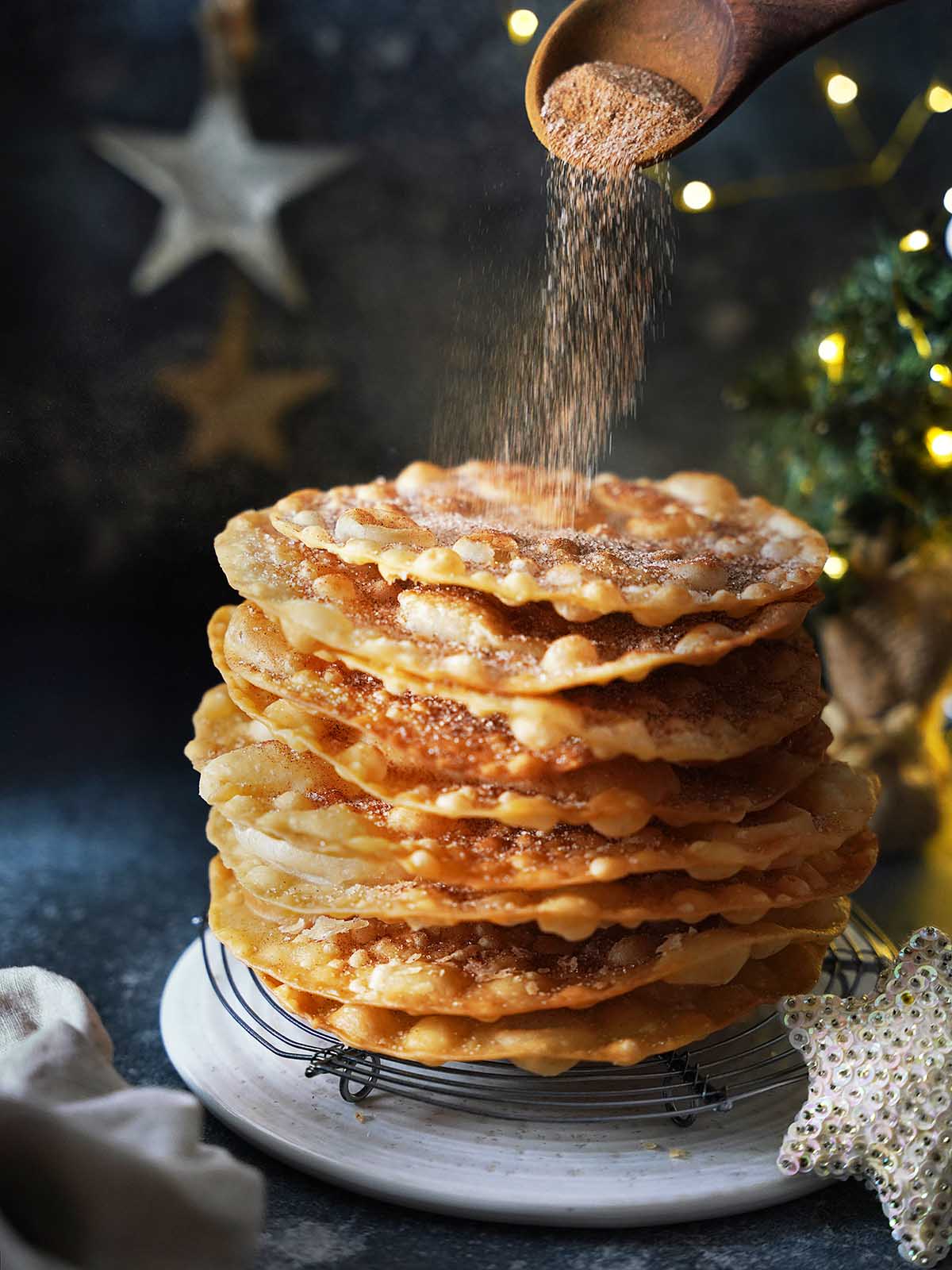
Buñuelos are a festive favorite in Mexico, symbolizing joy and celebration during Christmas. These thin, crispy discs of fried dough are generously sprinkled with cinnamon sugar or drizzled with piloncillo syrup, a sweet caramel-like sauce made from unrefined cane sugar. Often accompanied by a steaming cup of Mexican hot chocolate, Buñuelos add a crunchy and sweet note to the holiday festivities.
4. Germany: Lebkuchen

Lebkuchen is Germany’s answer to gingerbread, but with a softer, more cake-like texture. These spiced cookies are made with honey, nuts, and a medley of warming spices like cloves, cinnamon, and allspice. Often decorated with icing or dipped in chocolate, Lebkuchen are a quintessential part of German Christmas markets and make for delightful edible gifts during the holiday season.
5. France: Galette des Rois

While traditionally enjoyed on Epiphany (January 6th), Galette des Rois has become a popular French dessert during the Christmas season. This flaky puff pastry pie is filled with frangipane, a creamy almond paste, and often hides a small charm or figurine inside. The person who finds the charm is crowned king or queen for the day, adding a touch of playful excitement to the festivities.
Conclusion
Sweet treats are the heart of Christmas celebrations around the world, each one carrying a unique cultural story. From the spiced richness of Italy’s Panforte to the buttery saffron goodness of Sweden’s Lussekatter, these desserts invite us to share in the joy and warmth of the season. Trying these traditional sweets is not just a culinary adventure but a way to connect with the festive spirit that unites us all.
So, this Christmas, why not bring a touch of global sweetness to your table? ????
0
0 Comment
| Posted on
Christmas is a magical time of the year, celebrated with family, laughter, and, most importantly, food! Across the globe, different countries have unique traditions that often revolve around hearty meals and sweet treats. Each dish tells a story of culture, heritage, and festive cheer. Let's embark on a journey to explore the traditional Christmas dishes enjoyed in various parts of the world.
1. United Kingdom: Christmas Pudding and Roast Beef
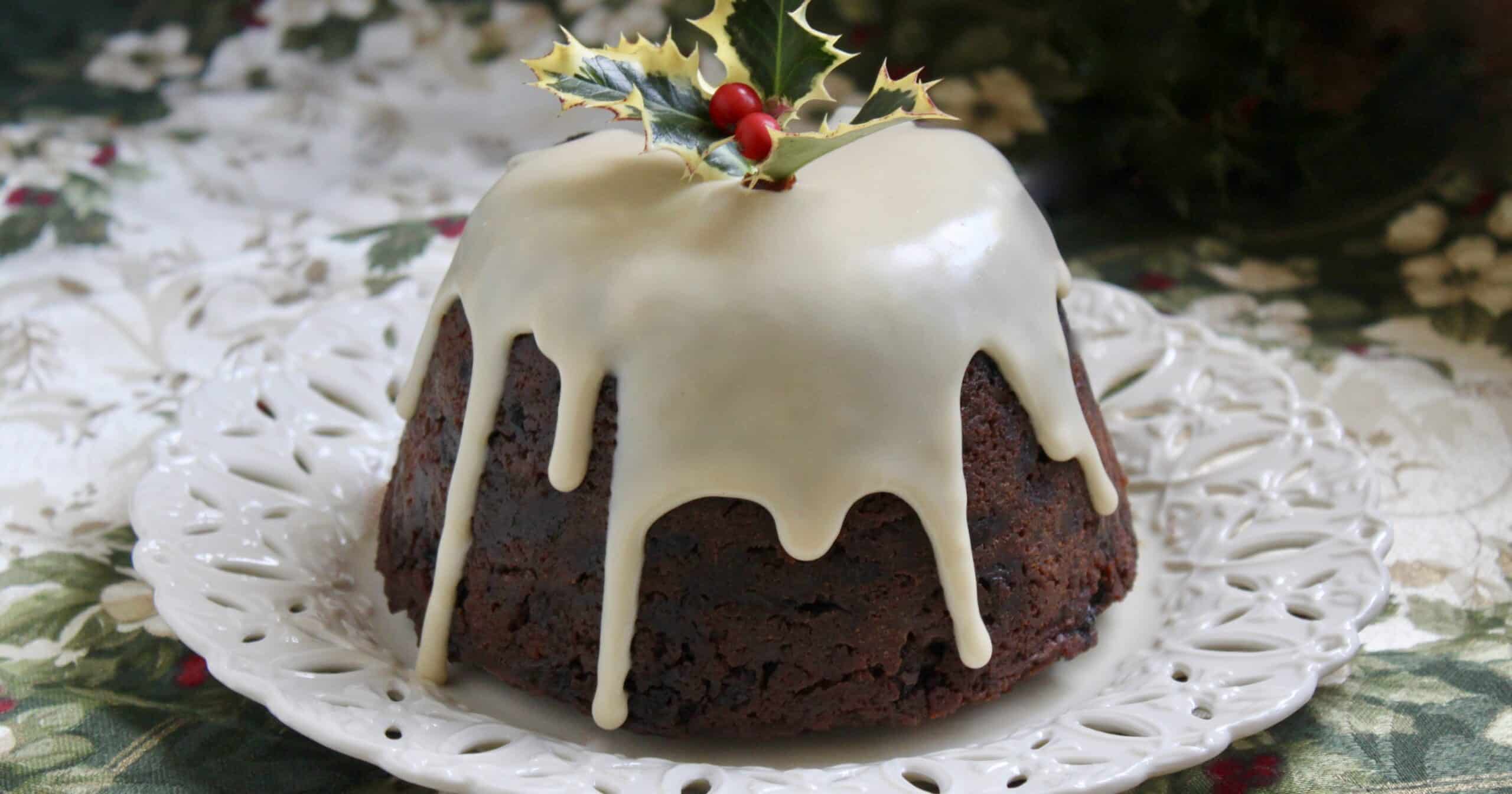
In the U.K., Christmas dinner includes roast beef or turkey served with Yorkshire pudding, roasted potatoes, and vegetables.
The highlight is the iconic Christmas pudding, a rich steamed dessert made with dried fruits, spices, and a dash of brandy. Traditionally, a coin is hidden inside for good luck!
2. United States: Roasted Turkey and Pumpkin Pie
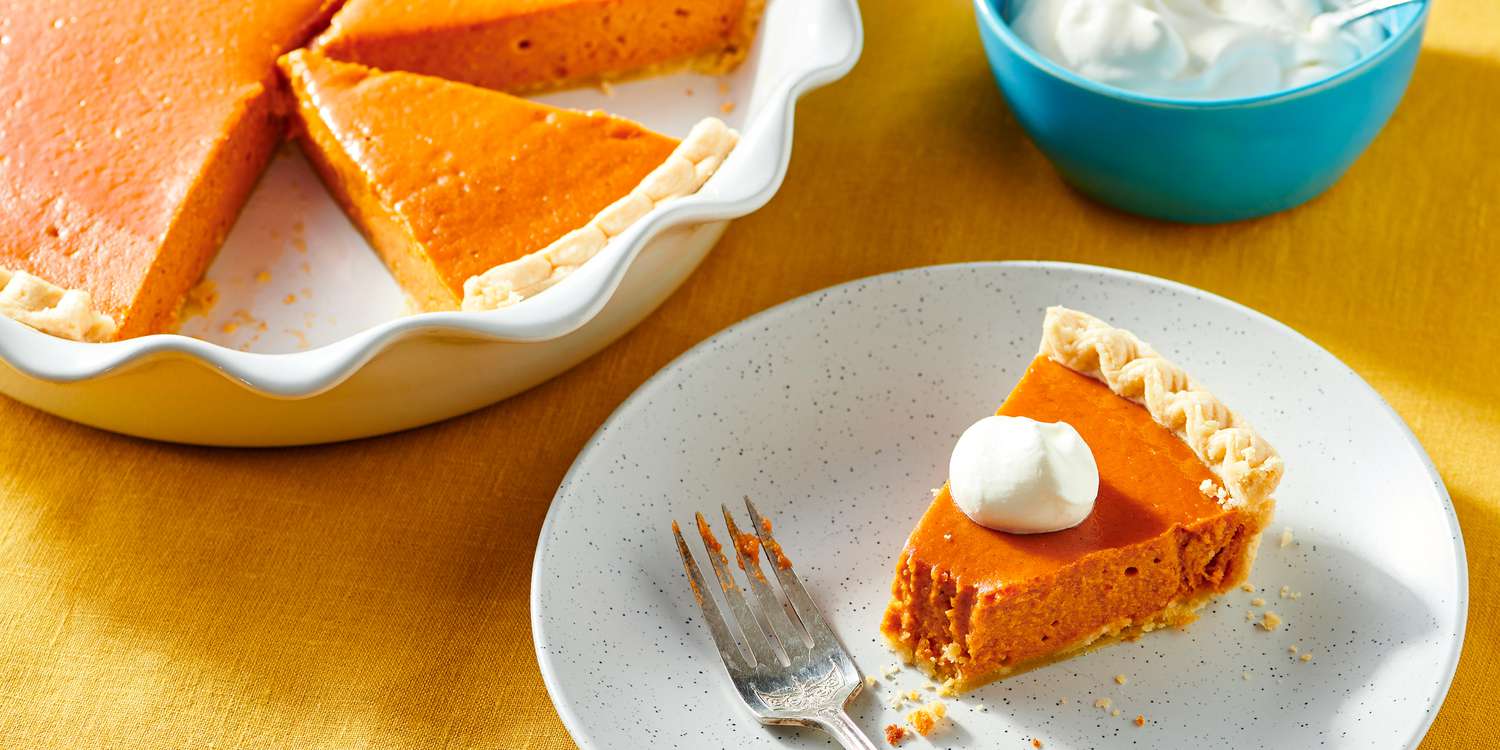
In the U.S., Christmas dinner often features a roasted turkey, though some opt for ham or beef roasts. Served alongside stuffing, mashed potatoes, cranberry sauce, and green beans, this meal is a hearty feast.
For dessert, pumpkin pie or pecan pie takes center stage, with flavors that evoke the warmth of the holiday season.
3. Germany: Stollen and Goose Roast
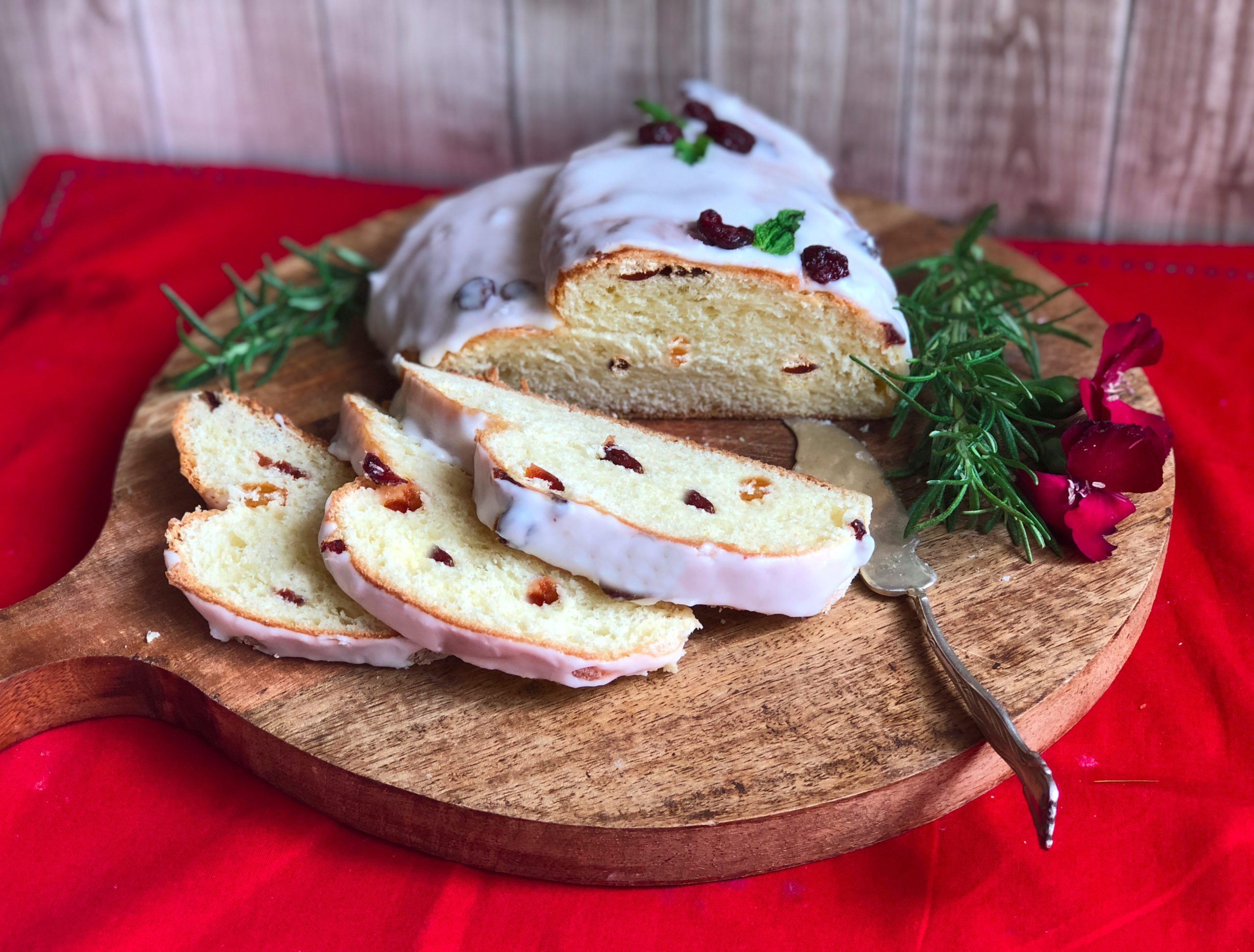
Germany’s Christmas culinary traditions are steeped in history. The centerpiece is often roast goose or duck, served with red cabbage and potato dumplings.
For dessert, Stollen is a must. This fruit bread, filled with nuts, spices, and marzipan, is dusted with powdered sugar, symbolizing the snow of winter.
4. Italy: Feast of the Seven Fishes and Panettone
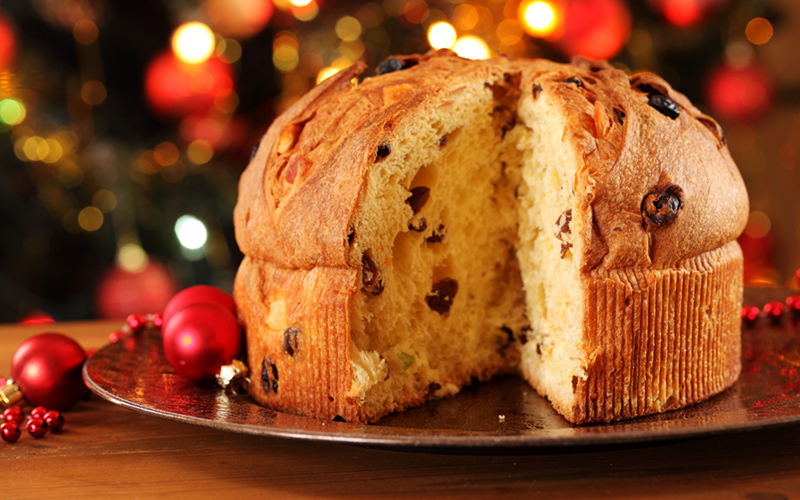
In Italy, Christmas Eve is celebrated with the Feast of the Seven Fishes, featuring dishes like salted cod, calamari, and shrimp.
Desserts include Panettone, a light, fluffy bread studded with candied fruits, and Torrone, a nougat treat filled with nuts.
5. France: Bûche de Noël and Foie Gras
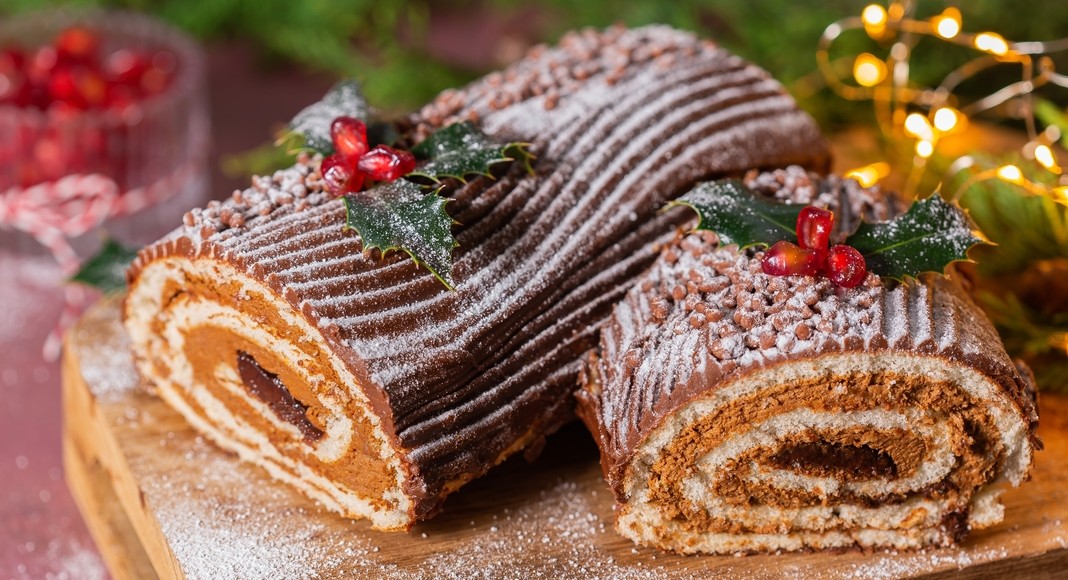
French Christmas dinners are elegant and indulgent. A typical meal includes foie gras, oysters, and roasted meats, paired with fine wine.
For dessert, the Bûche de Noël (Yule Log) steals the show. This decadent sponge cake, rolled and decorated to resemble a log, is a feast for both the eyes and the taste buds.
6. Spain: Turrón and Roast Lamb
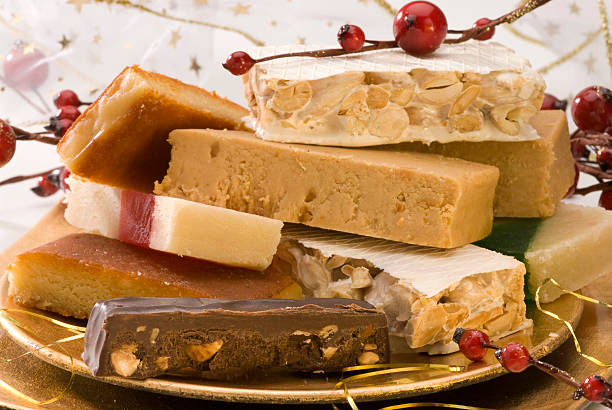
In Spain, Christmas dinner is a family affair with roast lamb or suckling pig as the main dish.
Desserts include Turrón, a traditional almond nougat, and Polvorones, crumbly almond cookies that melt in your mouth.
7. Sweden: Julbord and Rice Pudding
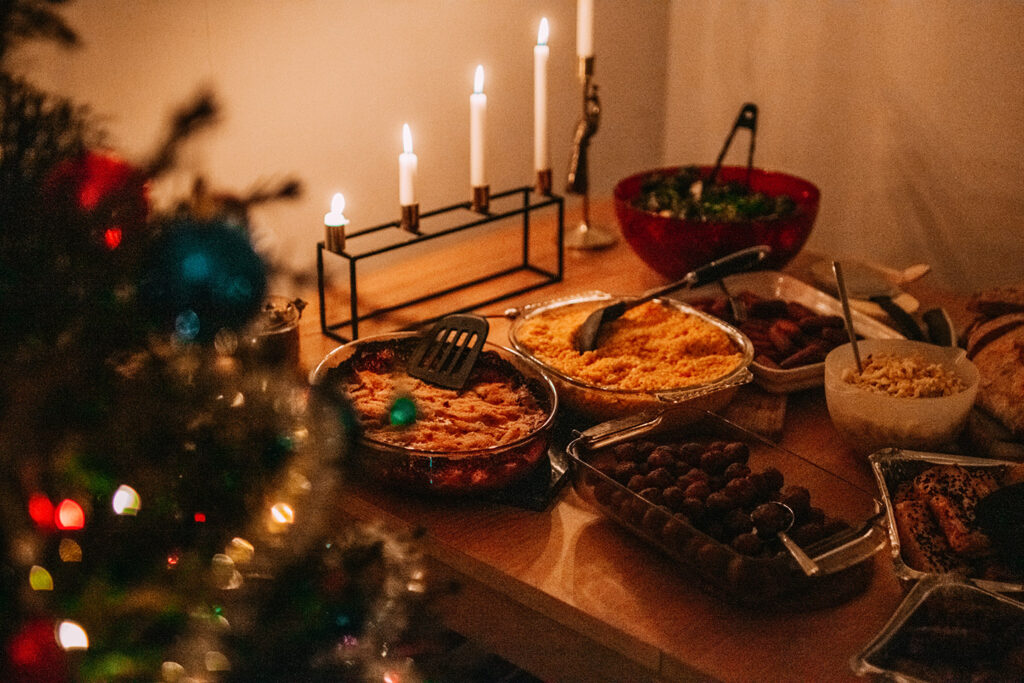
In Sweden, Christmas revolves around the Julbord, a festive buffet featuring herring, meatballs, ham, and gravlax (cured salmon).
Rice pudding is a popular dessert, and it’s customary to hide an almond in one of the bowls. The person who finds it is said to have good luck in the coming year.
8. Mexico: Tamales and Buñuelos
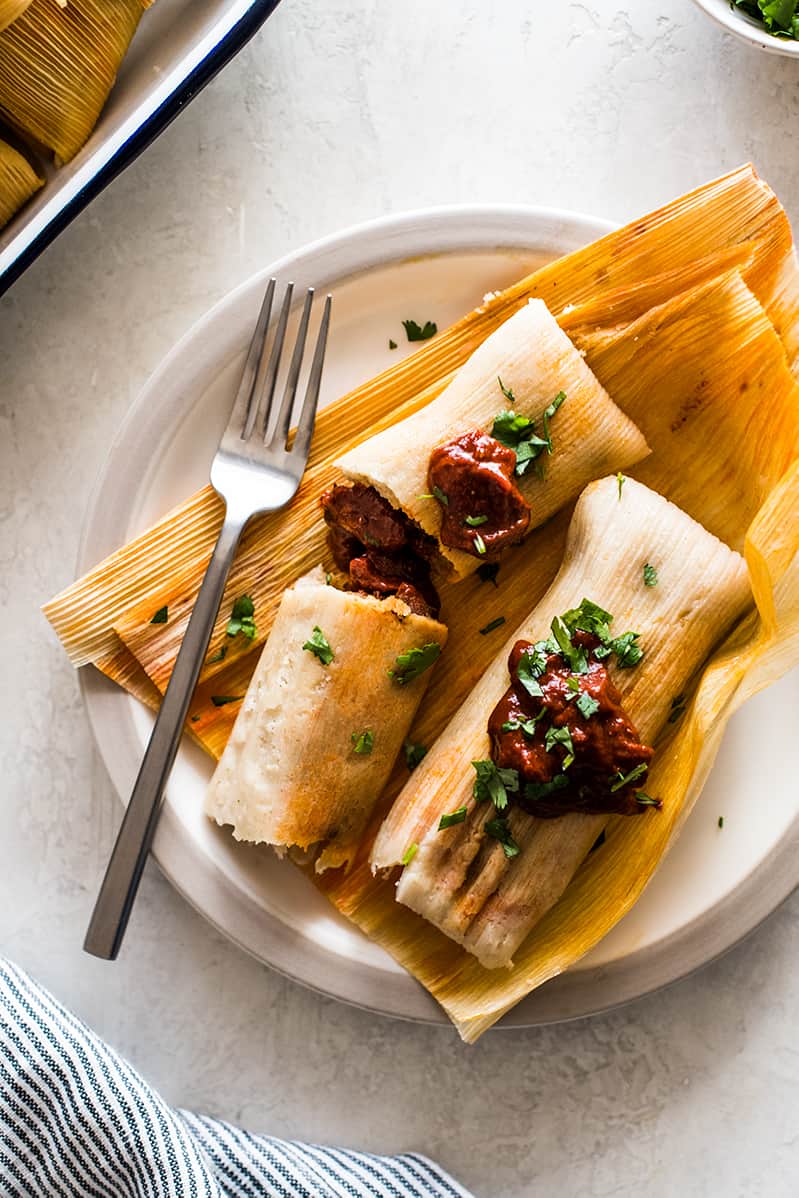
In Mexico, Christmas meals include tamales, corn dough filled with meats, cheese, or chilies, and wrapped in corn husks or banana leaves.
For dessert, Buñuelos, fried dough topped with cinnamon sugar or syrup, are a festive favorite. A cup of Mexican hot chocolate often completes the meal.
9. Philippines: Lechon and Bibingka
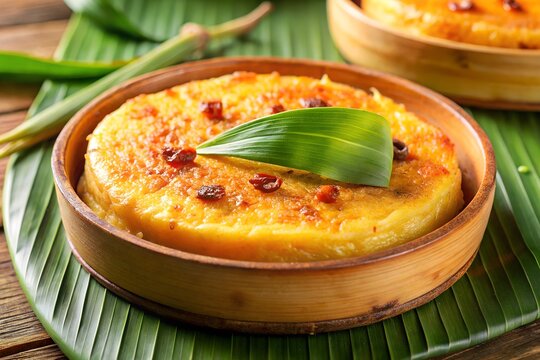
The Philippines celebrates Christmas with grandeur, and food plays a big role. Lechon, a whole roasted pig, is a centerpiece dish that symbolizes abundance.
For dessert, Bibingka, a rice cake baked in banana leaves, and Puto Bumbong, purple sticky rice topped with coconut, are must-haves.
10. Poland: Wigilia and Pierogi
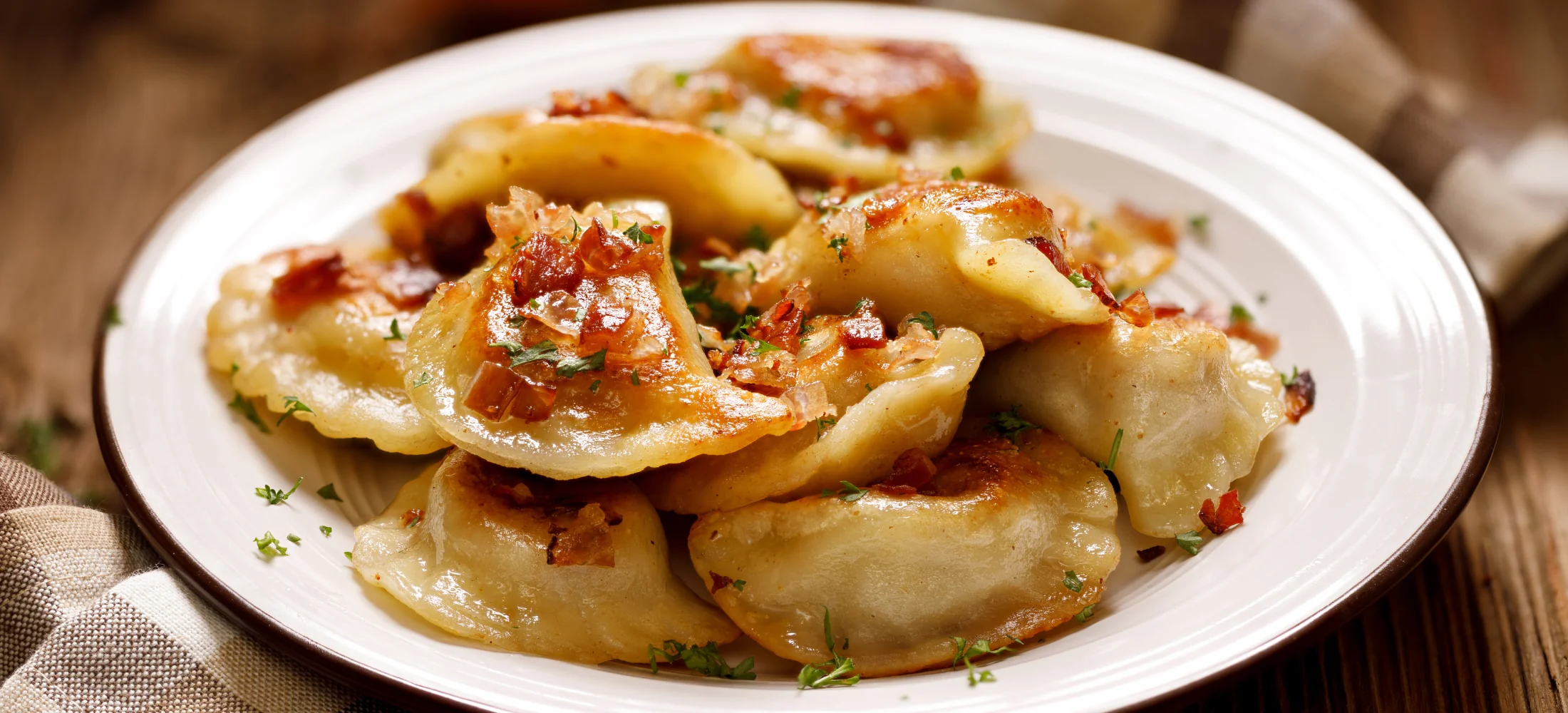
Polish Christmas Eve revolves around Wigilia, a 12-dish meal symbolizing the apostles. Fish, often carp, is the main protein, served alongside pierogi (dumplings) filled with cheese, potatoes, or sauerkraut.
For dessert, poppy seed cake or honey-spiced cookies are popular choices.
11. Australia: Barbecued Meats and Pavlova
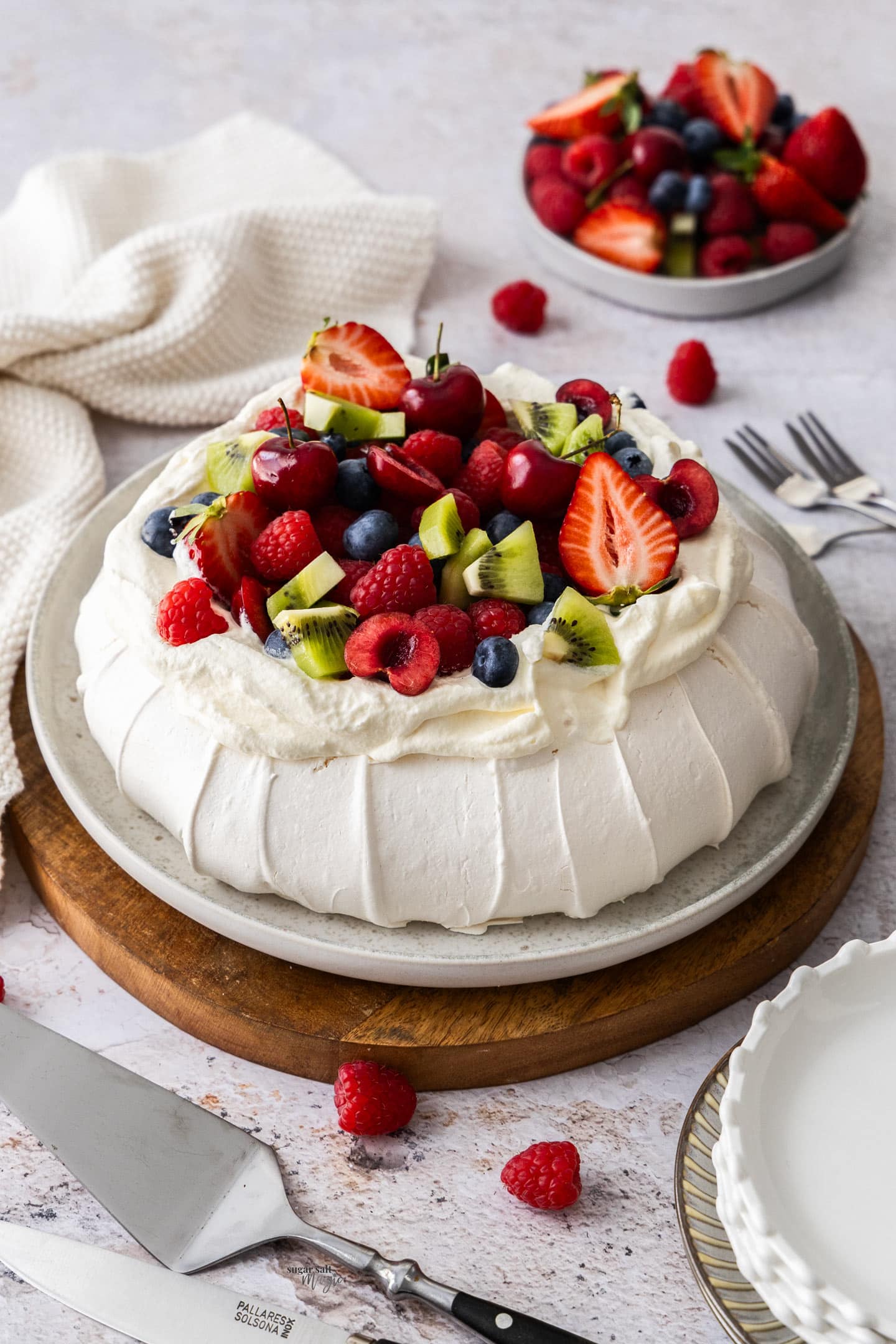
Christmas in Australia falls in the summer, so barbecues are a popular choice. Families enjoy grilled prawns, sausages, and salads.
For dessert, Pavlova, a meringue-based dessert topped with fresh fruits, is light, refreshing, and perfect for the warm weather.
12. Japan: Fried Chicken and Christmas Cake

In Japan, Christmas isn’t a traditional holiday, but it’s celebrated with some unique customs. Fried chicken, popularized by a famous fast-food chain, is a go-to meal.
For dessert, a light and fluffy Christmas Cake made with sponge cake, strawberries, and whipped cream is the star of the celebration.
13. Russia: Kutya and Pirozhki
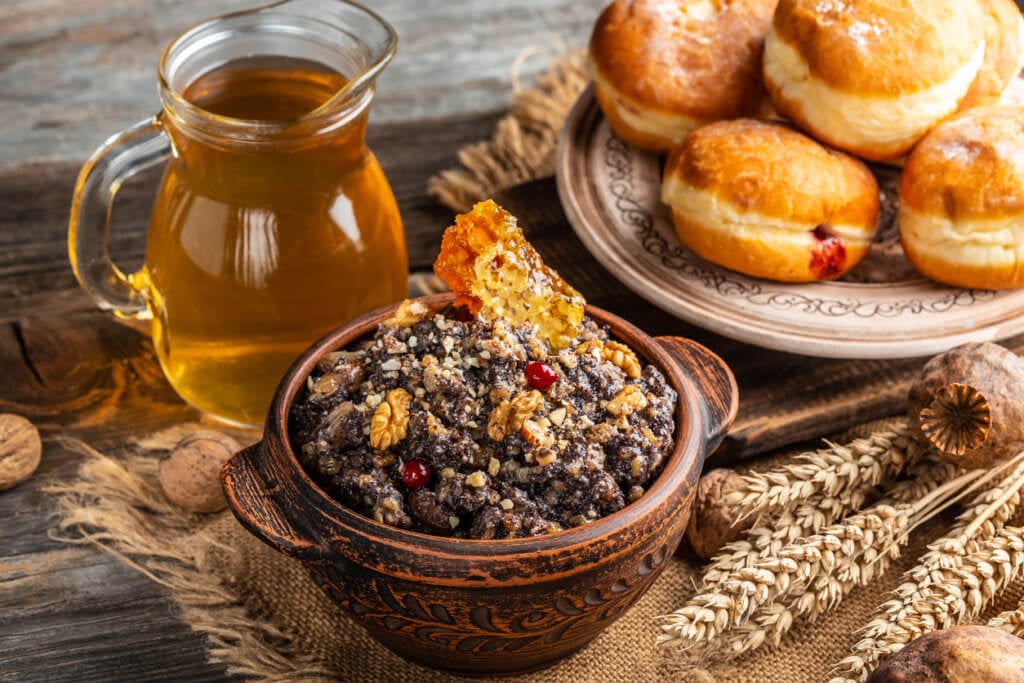
In Russia, Orthodox Christians celebrate Christmas on January 7th. Traditional dishes include Kutya, a sweet porridge made with wheat berries, honey, and poppy seeds, symbolizing hope and prosperity.
Pirozhki, baked or fried buns filled with meat or vegetables, often accompany the meal.
14. Greece: Christopsomo and Roast Lamb
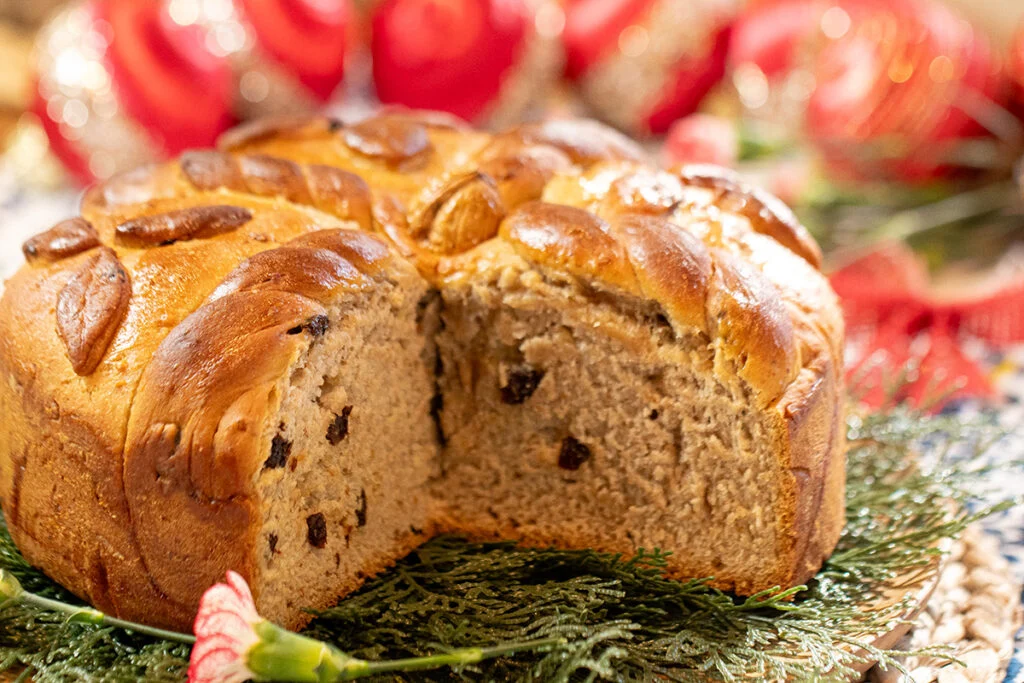
In Greece, Christmas meals often feature roast lamb or pork, seasoned with garlic and herbs.
Christopsomo, or “Christ’s Bread,” is a sweet, spiced loaf decorated with a cross, symbolizing blessings for the home.
15. South Africa: Mince Pies and Malva Pudding
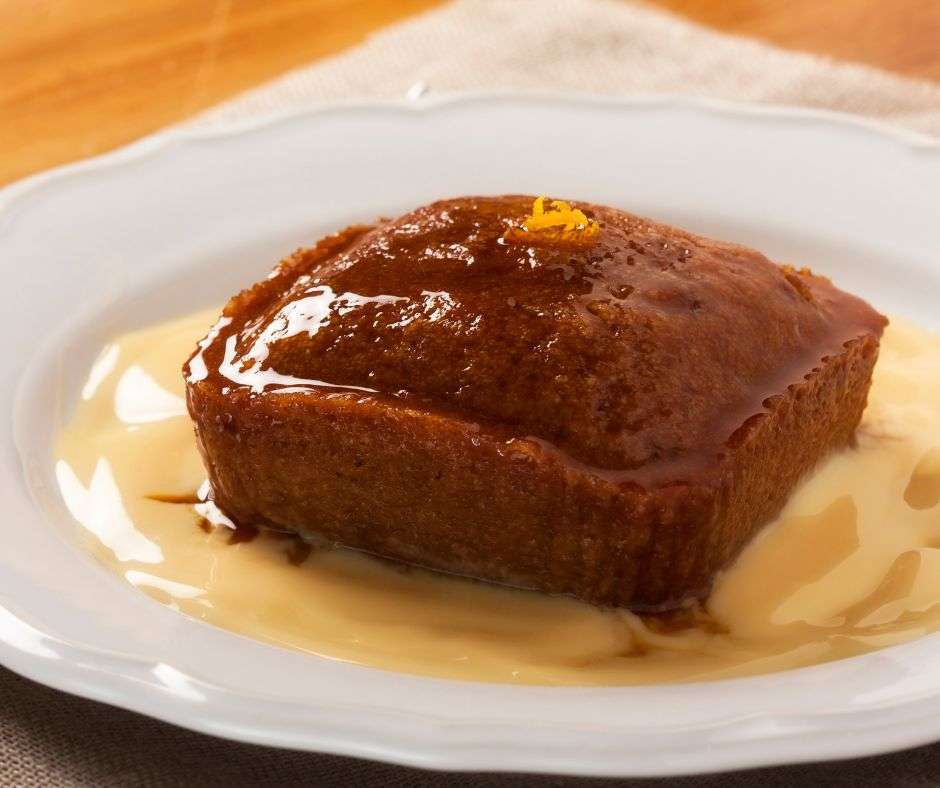
South African Christmas menus blend local and British traditions. Roast meats and mince pies are staples.
For dessert, Malva Pudding, a sweet, sticky sponge pudding served with custard, is a festive favorite.
Conclusion
Christmas traditions around the world offer a glimpse into the heart and soul of different cultures. Whether it’s the sweet treats of Italy, the hearty roasts of the U.K., or the vibrant flavors of Mexico, each dish adds its own charm to the season.
Exploring these culinary delights not only satisfies the taste buds but also fosters an appreciation for the diverse ways people celebrate this joyous occasion.
0
0 Comment
